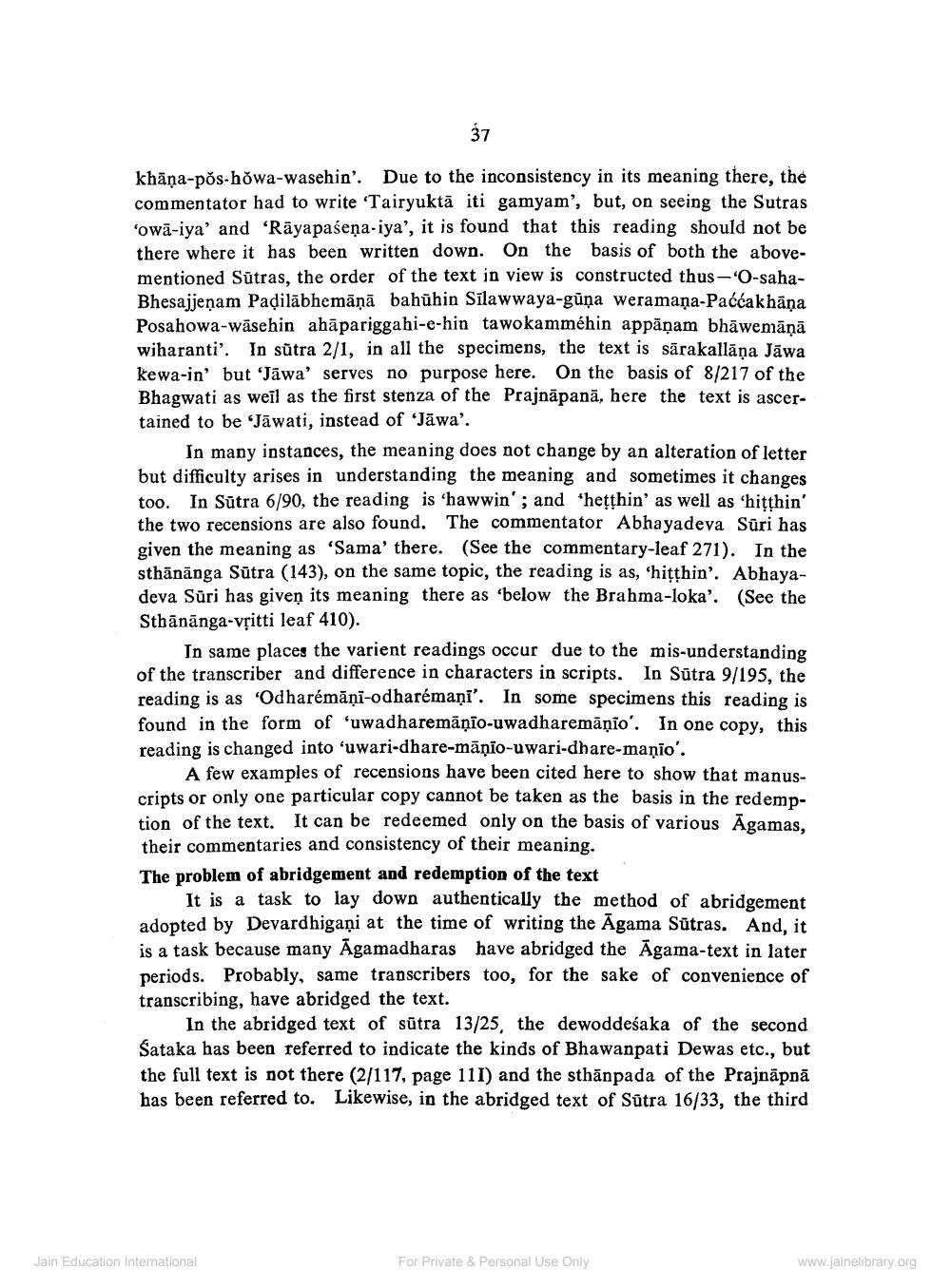________________
37
khāņa-pos-howa-wasehin'. Due to the inconsistency in its meaning there, the commentator had to write 'Tairyuktā iti gamyam', but, on seeing the Sutras ‘owā-iya' and 'Rāyapaśeņa-iya', it is found that this reading should not be there where it has been written down. On the basis of both the abovementioned Sūtras, the order of the text in view is constructed thus-O-sahaBhesajjenam Padilābhemāņā bahūhin Silawwaya-gūņa weramaņa-Paććakhāna Posahowa-wāsehin ahāpariggahi-e-hin tawokammehin appāņam bhāwemānā wiharanti'. In sūtra 2/1, in all the specimens, the text is sārakallāņa Jāwa kewa-in' but Jāwa' serves no purpose here. On the basis of 8/217 of the Bhagwati as weil as the first stenza of the Prajnāpanā, here the text is ascertained to be ‘Jāwati, instead of 'Jawa'.
In many instances, the meaning does not change by an alteration of letter but difficulty arises in understanding the meaning and sometimes it changes too. In Sūtra 6/90, the reading is 'hawwin'; and thețțhin' as well as 'hiţthin' the two recensions are also found. The commentator Abhayadeva Sūri has given the meaning as 'Sama' there. (See the commentary-leaf 271). In the sthānānga Sūtra (143), on the same topic, the reading is as, 'hitthin'. Abhayadeva Sūri has given its meaning there as 'below the Brahma-loka'. (See the Sthānānga-vșitti leaf 410).
In same places the varient readings occur due to the mis-understanding of the transcriber and difference in characters in scripts. In Sūtra 9/195, the reading is as 'Odharémāņi-odharémaņi'. In some specimens this reading is found in the form of 'uwadharemāņio-uwadharemāņio'. In one copy, this reading is changed into 'uwari-dhare-māņio-uwari-dhare-maņio'.
A few examples of recensions have been cited here to show that manuscripts or only one particular copy cannot be taken as the basis in the redemption of the text. It can be redeemed only on the basis of various Āgamas. their commentaries and consistency of their meaning. The problem of abridgement and redemption of the text
It is a task to lay down authentically the method of abridgement adopted by Devardhigaņi at the time of writing the Agama Sūtras. And, it is a task because many Āgamadharas have abridged the Āgama-text in later periods. Probably, same transcribers too, for the sake of convenience of transcribing, have abridged the text.
In the abridged text of sūtra 13/25, the dewoddeśaka of the second Sataka has been referred to indicate the kinds of Bhawanpati Dewas etc., but the full text is not there (2/117, page 111) and the sthānpada of the Prajnāpnā has been referred to. Likewise, in the abridged text of Sūtra 16/33, the third
Jain Education International
For Private & Personal Use Only
www.jainelibrary.org




